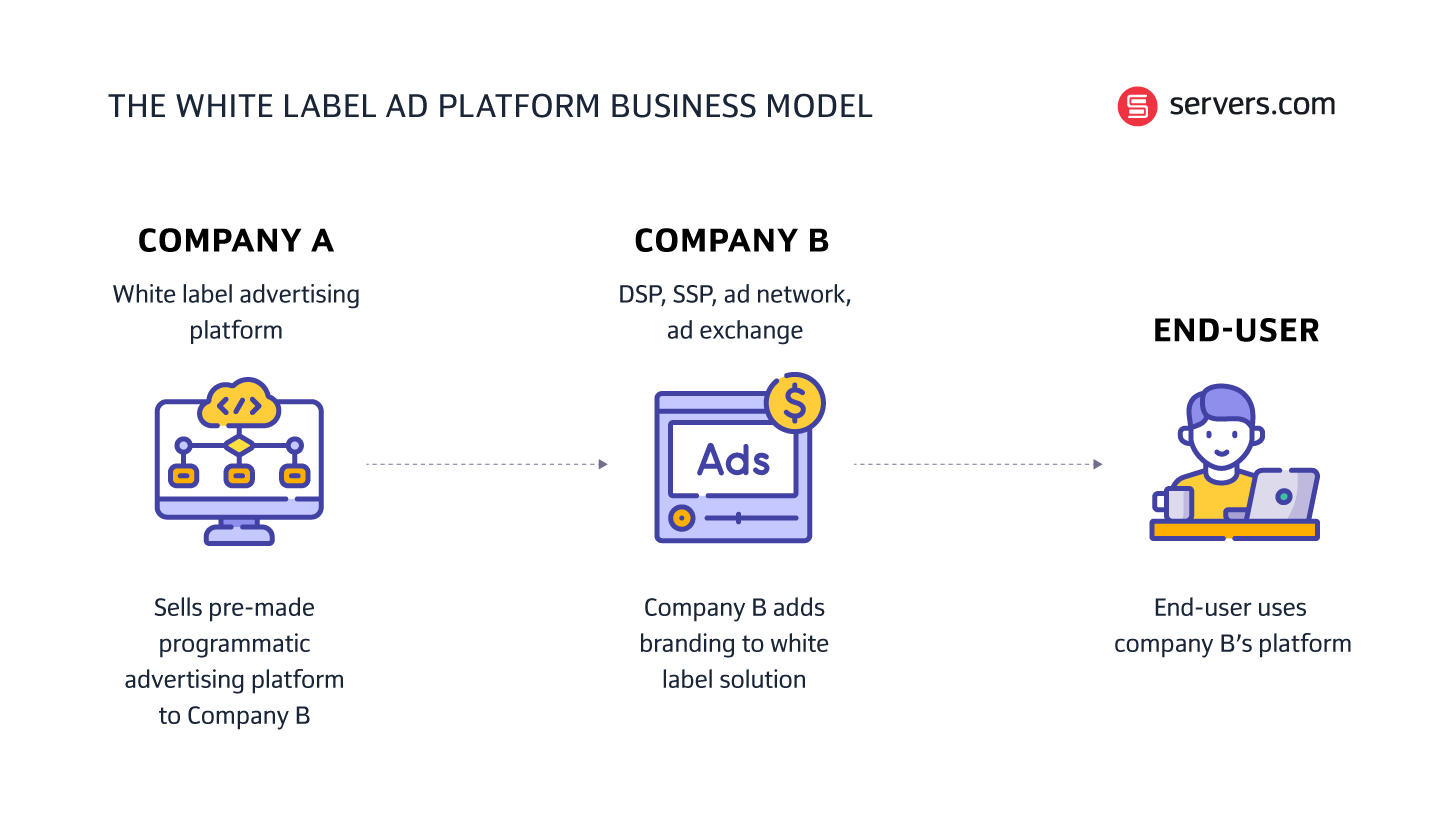

The practice of white labeling exists across almost every industry. From physical white label products like cosmetics or t-shirts to white label trading solutions and NFTs. And now, more white label advertising platforms have started to emerge within the adtech ecosystem too.
In this blog post we discuss what white label advertising platforms are and five key benefits for advertisers and publishers to answer the ultimate question for adtech companies: how can white label products help us?
First thing’s first:

White label products are pre-built products that can be purchased and customized by other businesses. No-code website builders like WordPress and Squarespace are prime examples of white label technology products. They enable any business to build a website without having to develop their own technology in-house. A white label advertising platform follows the same model, providing pre-made programmatic advertising platforms that adtech companies can tailor to their brand specifications.
Some white label advertising platforms specialize in a particular branch of programmatic advertising. Others offer a combination of several activities within one platform. Combining demand-side and sell-side activity, for example. But typically, white label advertising platforms fall under one of three categories.
DSPs are programmatic advertising platforms that automate the buying and selling of ad impressions in real-time. A white label DSP is simply a prefabricated DSP software that can be purchased and customized by other businesses. For instance, an ad agency might invest in a white label DSP to create a bespoke product instead of relying on a third-party for its programmatic advertising campaigns.
Adtech solutions provider, Epom, recently launched an updated white label DSP. DSP 5.5, comes with a range of advanced features for advertisers including single format campaigns, improved targeting and optimization, analytics charts, macro validation, and a help center integration. Updates designed to make it “easier to manage programmatic advertising in-house”.
In much the same vein, a white label SSP is a ready-made supply-side platform. SSPs are a type of programmatic advertising software used to automate the selling of ad impressions by connecting publishers with a wide pool of buyers across DSPs, ad networks and ad exchanges. White label SSPs (like SmartyAds) make it easy for publishers to build an in-house SSP and start monetizing Ad inventory. With no coding, designing, licensing, or maintenance required.
Ad networks like AppLovin and Google AdSense, connect advertisers with publishers selling ad inventory. Ad exchanges, on the other hand, act as digital marketplaces where advertisers bid for ad space from publishers. AppNexus and Microsoft Advertising Exchange being prime examples. White label solutions make it easy to build multi-channel custom ad networks and exchanges.
Admixer, for instance, offers an all-in-one ad management and monetization platform for building custom advertising networks. The white label advertising platform is specifically designed for large publishers and ad network owners looking to build a premium solution catering to various advertising formats including desktop, video and CTV, mobile, native ads, and rich media (ads with advanced features like audio, animation, video, or downloadable programs).
White label programmatic advertising is becoming increasingly popular. And for good reason. For adtech companies, opting for a white label solution over building from scratch can significantly reduce complexities.
Benefits of white label ad platforms include:
For adtech companies without the technical resource to build a platform in-house, using a white label platform is much more straightforward. There’s no need to hire developers and a white label product can usually be set up in under a week. For these reasons white label advertising platforms can be a great choice for smaller advertisers or publishers without the upfront capital or experience to build from scratch.
Despite being an ‘off-the-shelf’ product, white label solutions are fully customizable and ripe for rebranding. “It’s not just a pre-made solution or a boxed solution that you can’t adjust to your needs”, comments Roman Vrublivsky, CEO of SmartHub White Label Ad Exchange. “These days, a lot of White-Label providers offer additional custom feature development, helping with some rare types of integrations and even setting up additional technical platform modules”.
Opting for a white label solution is typically cheaper than building software from scratch. The cost of building the platform in the first instance and then maintaining it is eliminated. It’s the white label vendor that fronts these costs. Platforms can be launched, made operational, and ready to monetize in a matter of days.
Although the upfront investment for a white label platform is higher than a third-party software-as-a-service (SaaS) solution, the long-term savings can be significant. And with a white label platform, you’re at less risk of overpaying for impressions.
It’s relatively easy to scale a white label product. The white label vendor will have the infrastructure in place to quickly upgrade its clients to a bigger or smaller plan, as needed. That said it’s important to check with your chosen vendor in advance to ensure that it has servers ready to provision in the right locations.
By contrast, scaling a programmatic advertising platform in-house can be a big ordeal and often results in a platform being shut down for a period of temporary maintenance.
With white label advertising platforms, there’s also the added benefit of having a team of experts on hand to help develop and maintain your programmatic platform. The client isn’t required to carry out any technical maintenance, freeing up time to focus on business-critical operations. And if something goes wrong, the white label platform is responsible for troubleshooting the issue.
Developing an SSP, DSP, ad network or exchange from scratch would realistically take months or even years. But a white label product can be set up, customized, and operational within just days or weeks. And the financial barriers are also lower.
No wages for developers and engineers, no need to build or maintain dedicated ad servers, and no certificates or audits required. In short, white label advertising platforms democratize opportunities for advertisers and publishers by allowing startups and SMBs to get up and running (and monetizing) quickly.